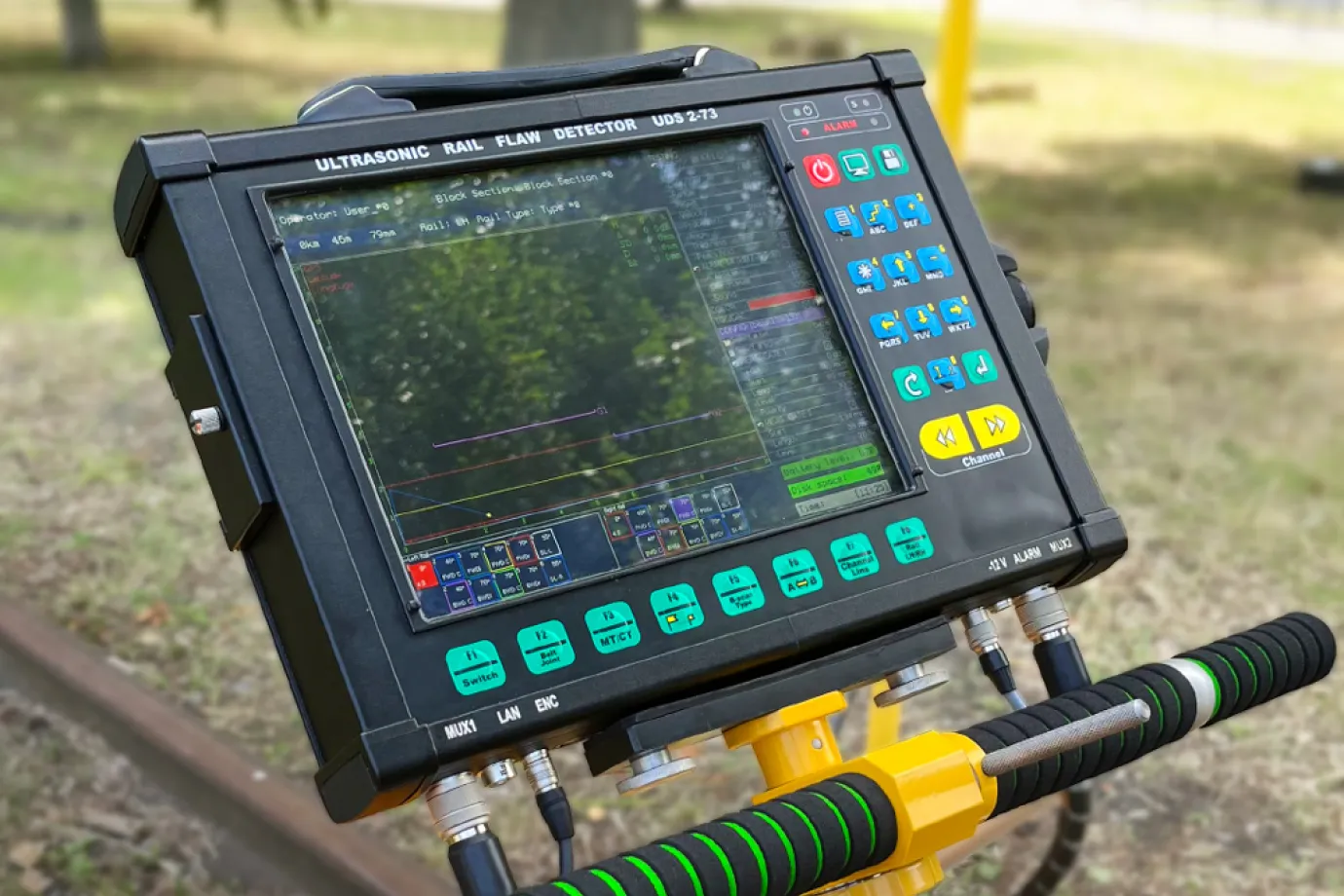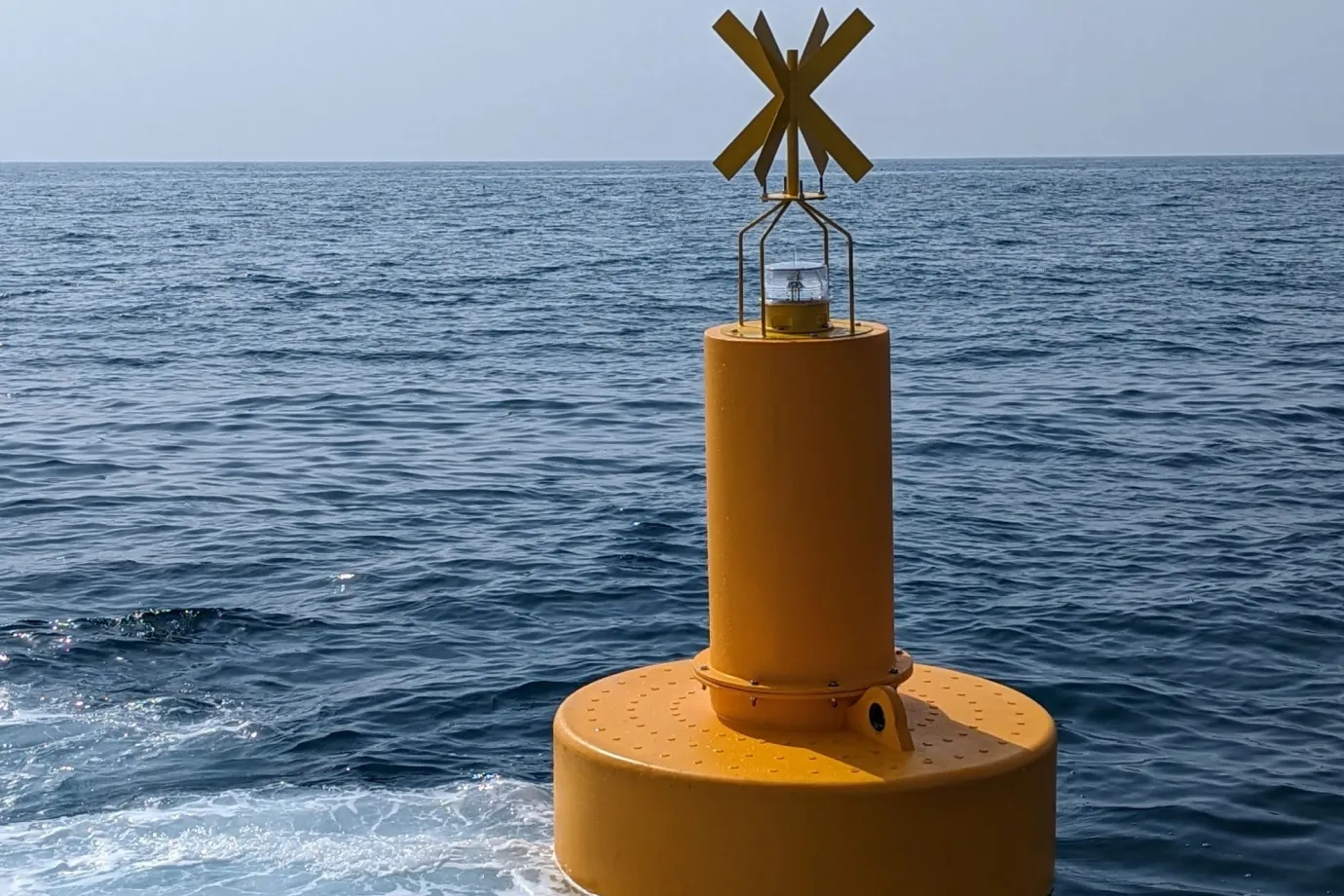Tracks wear out over time, which can directly impact railway safety. Therefore, regular inspection is required to ensure the integrity of rail tracks. This railway wear often shows up on the track’s surface and can be identified either through visual inspection or advanced equipment. But the interior defects are not identified easily, and specific technical equipment is needed. Various methods are used to inspect the interior failures in the track’s infrastructure. Among these methods, we proceed with the guided wave rail testing and long-range ultrasonic rail testing, and their benefits and challenges as a common non-destructive testing method.
For accurate detection of internal rail defects over long distances, explore our “railway ultrasonic inspection equipment“.

What Are Guided-Wave and Long-Range Ultrasonic Rail Testing?
Let’s start with understanding two primary methods of rail inspection: destructive and non-destructive testing methods. In the destructive testing method, the infrastructure of rail components is destroyed to inspect, while in the non-destructive testing method, the rail components are inspected without any destruction to their infrastructure. However, both destructive and non-destructive inspections are deployed through various methods. Ultrasonic testing is a reliable and common non-destructive testing method, where ultrasonic sound waves are transferred to the track infrastructure to detect defects. At the core of this, guided-wave and long-range ultrasonic rail testing are two ultrasonic rail inspection methods, which we discuss more in the following:
See also: “Ultrasonic Rail Inspection Methods“
Guided Wave Rail Testing

Guided wave rail testing is one of the most common methods of ultrasonic inspection, where low-frequency ultrasonic sound waves (5 to 250 kHz) travel along the length of the rail to inspect the rail infrastructure deep down. The propagated ultrasonic waves are reflected by defects, welds, surface flaws, or changes in geometry, allowing their presence and location to be detected by sensors. In other words, the waves’ speed and the time that they bounce off the transducer define the location of the defects. Due to their low frequency, guided ultrasonic waves lose minimal energy during propagation, which allows them to travel long distances and reach hard-to-access areas along the rail without requiring any component removal or destroying the track infrastructure.
Looking to understand where flaw detection matters most? Read our guide on the “Top Applications of Ultrasonic Flaw Detectors“.
Long-Range Ultrasonic Rail Testing

Long-range ultrasonic testing (LRUT) is a non-destructive testing (NDT) method and a specialized application of guided wave rail testing that focuses on detecting defects over extended distances from a single inspection point. It uses low-frequency ultrasonic guided waves that propagate along the length of the rail, enabling the inspection of large sections without needing direct access to the entire surface.
This makes LRUT particularly valuable in areas where traditional testing methods are impractical, such as sections of rail that are buried, obstructed by sleepers or fasteners, or located in hazardous or hard-to-reach environments. By analyzing the reflections and changes in wave behavior caused by welds, cracks, corrosion, or geometric anomalies, LRUT rail inspection enables early fault detection and supports predictive maintenance strategies. It significantly reduces the need for track disassembly, speeds up inspection time, and helps operators prioritize repairs, ultimately improving rail safety and minimizing downtime.
Guided-Wave Vs. Long-Range Ultrasonic Testing
Guided-wave and long-range ultrasonic testing follow a similar instruction to inspect the rail infrastructure. They both use low-frequency ultrasonic sound waves to detect the interior defects, which are located in inaccessible or hard-to-reach areas. But what is the difference between these two methods? Let’s find out.
Guided wave rail testing is a broader method where the ultrasonic waves are sent out along the rail to detect both surface and interior defects in railway infrastructure, including corrosion, cracks, and weld failures. This method can be used for both longer-range inspections, depending on the testing setup and objectives. LRUT rail inspection, on the other hand, is a specific application of guided wave rail testing, which is optimized for inspecting long distances from a single point.
The major difference between these two methods is that the guided wave rail testing focuses on precision and adaptability to different rail geometries, while LRUT is designed for rapid screening of inaccessible or obstructed areas, making it ideal for early detection and prioritization of maintenance in large-scale rail networks.
The table below is a comprehensive comparison between guided-wave and long-range ultrasonic testing for rails, which offers a better insight into how these two methods differ in detail:

Why Guided Wave Rail Testing: Benefits and Challenges

As mentioned above, guided wave rail testing is an ultrasonic rail inspection method where the low-frequency ultrasonic waves are transferred along the rail structure, instead of the other ultrasonic rail inspection methods, where only the area beneath the transducer is inspected. Therefore, it enables the inspection of long sections of rail just from a single point, significantly reducing the need for extensive surface access or disassembly of track components. Among its key benefits are the ability to detect defects in hard-to-reach areas, minimal disruption to railway operations, and improved inspection speed.
(image)
However, guided wave testing also comes with challenges, such as the complexity of interpreting wave reflections and the potential for reduced sensitivity to small or angled flaws. Accurate results rely heavily on operator expertise and proper calibration, making training and equipment setup critical for effective application. Despite these limitations, guided wave rail testing remains a powerful tool for proactive maintenance and early inspection.
Conclusion
In the world of technology, railway inspection and maintenance are not as complex as it was in the past, even in the deep-down areas where it is hard to reach. This is why guided-wave and long-range ultrasonic testing for rails has become an efficient way to detect the railway defects located in long-distance components. In this article, we delved into understanding these methods in detail, how they differ, and what benefits and challenges they offer.
In conclusion, guided-wave UT can play a significant role in detecting the interior defects in the railway infrastructure, including cracks, corrosion, and weld flaws, without requiring the removal of any components or destroying them, which incurs a significant expense. As an efficient solution, this method not only minimizes the maintenance expenses but also inspects the long-distance areas with high precision, maximizing the railway safety and operation.




